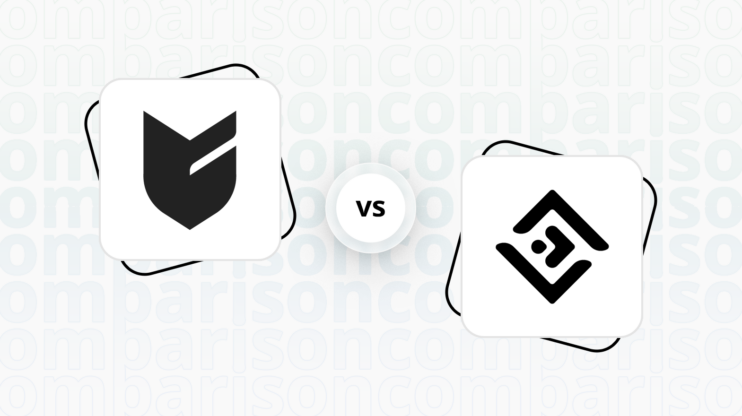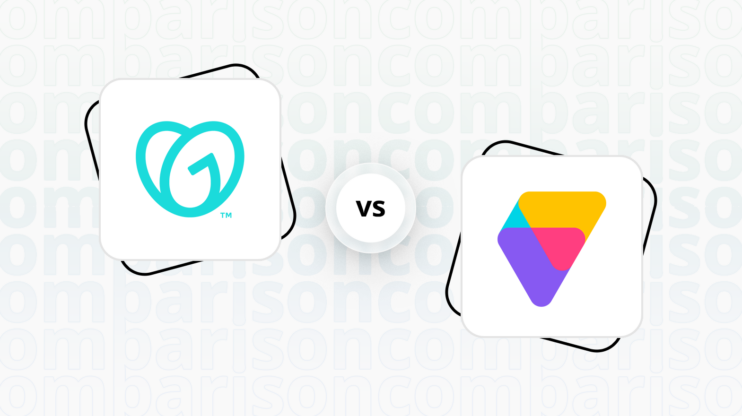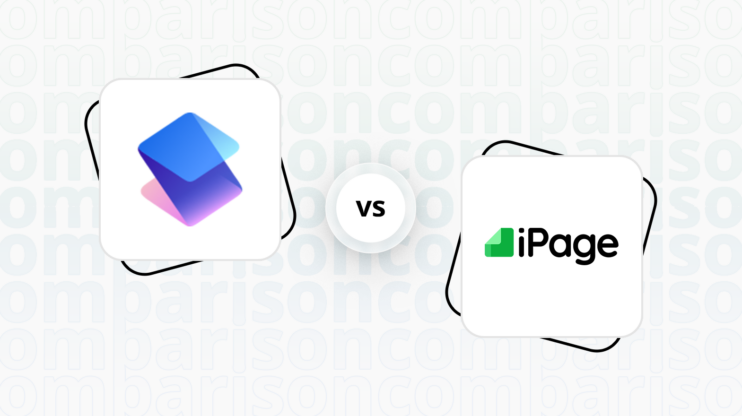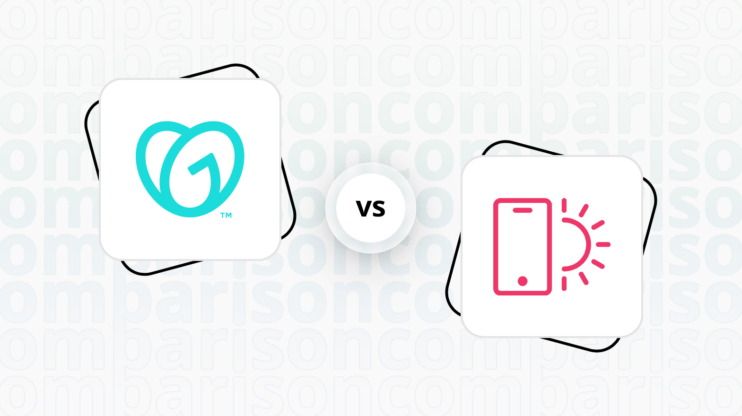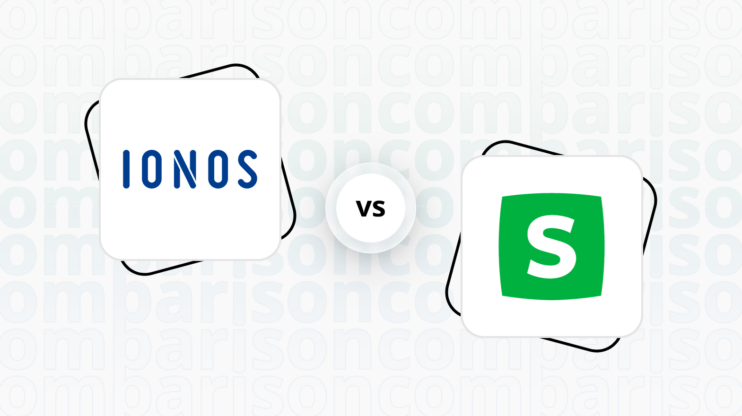Final verdict
Squarespace and SubHub cater to different needs, with Squarespace excelling in general website creation and SubHub specializing in membership sites.
-
Squarespace (Overall Grade: 7.9/10)
is a versatile website builder known for its user-friendly interface and extensive design functionalities. It offers a wide range of templates and customization options, making it ideal for users who prioritize aesthetics and ease of use. Squarespace also provides robust ecommerce features, comprehensive marketing tools, and strong customer support, making it a solid choice for creating professional websites without coding. -
SubHub (Overall Grade: 5.6/10)
is tailored for content creators and entrepreneurs looking to build and manage membership sites. It simplifies the process of setting up subscription models and managing member access, making it an excellent choice for those aiming to monetize their content. While it may not offer the same level of design flexibility or ecommerce capabilities as Squarespace, SubHub’s focus on membership site functionalities makes it a valuable tool for building a community and providing exclusive content.

|

|
|
|---|---|---|
|
Design functionalities & templates |
8.0 |
6.8 |
|
Ease of use |
8.3 |
7.7 |
|
Ecommerce |
8.2 |
5.9 |
|
Website Editors |
8.3 |
6.9 |
|
Product testing options |
7.4 |
7.0 |
|
Price |
8.4 |
6.8 |
|
Hosting quality |
7.6 |
5.5 |
|
Website speed optimization |
6.7 |
5.6 |
|
Plugins and integrations |
6.8 |
5.7 |
|
Marketing features |
8.1 |
5.7 |
|
Customer support |
7.8 |
6.3 |
|
Security |
8.8 |
4.0 |
|
AI capabilities |
7.5 |
0 |
|
User Management |
7.4 |
5.2 |
| Overall |
7.9 |
5.6 |
Best for ecommerce
 8.2
8.2
 5.9
5.9
Verdict
: Squarespace is a more robust option for ecommerce, offering a comprehensive set of features and tools, while SubHub is more specialized for membership-based businesses but lacks the depth in ecommerce functionalities.
-
Squarespace
: Squarespace is a user-friendly ecommerce solution for businesses, simplifying online store setup with an intuitive interface and customizable templates. It streamlines product management, ensuring a visually appealing and responsive store on various devices. The platform handles secure payment processing, flexible shipping options, and automated tax calculations, while also providing built-in marketing tools, SEO optimization, and detailed analytics for enhanced store visibility and performance. Best for ecommerce score: 8.2. -
SubHub
: SubHub supports various ecommerce features including sales of physical goods, digital products, and pay-per-view content, with a customizable storefront and product categories. It offers flexible shipping and tax configurations, inventory management, and automatic order confirmation emails. However, it lacks support for distributing free products and does not manage the dispatch of physical goods, potentially requiring sellers to handle their shipping logistics. Best for ecommerce score: 5.9.
Best for informational & business websites
 8.4
8.4
 7.2
7.2
Verdict
: Squarespace is the superior choice for creating informational and business websites, thanks to its user-friendly interface, extensive design options, and robust support and security features. SubHub, while specialized for membership sites, falls short in comparison for general informational website needs.
-
Squarespace
: Squarespace excels in providing a seamless experience for creating professional and visually appealing informational websites. With a score of 8.4, it offers a wide variety of templates, an intuitive editor, and comprehensive support and security features. Squarespace is ideal for users who prioritize design flexibility and ease of use. -
SubHub
: SubHub, scoring 7.2, is tailored for membership sites and content creators looking to monetize their content. While it offers tools for managing subscriptions and member access, it lacks the design flexibility and broader functionality that Squarespace provides. For general informational websites, SubHub may not be the best fit when comparing Squarespace vs SubHub.
Detailed comparison
Design functionalities & templates
Design FunctionalitiesRepresents how well each platform allows for creative design and customization of websites.Score Components:
- Template Variety (30%): Range and quality of design templates.
- Customization (30%): Flexibility and options for design alterations.
- User Interface (20%): Ease and intuitiveness of the design process.
- Responsiveness (10%): Adaptability to different devices and screen sizes.
- Innovation (10%): Unique design features and tools.
 8.0
8.0
 6.8
6.8
🏆
Winner: Squarespace.
Squarespace offers a wider variety of templates and more creative design possibilities, making it the better choice for users who prioritize design flexibility and aesthetics.
Squarespace boasts an impressive variety of website templates, offering over 120 pre-designed options to choose from. These templates cater to a wide range of needs and industries, from creative portfolios and sleek online stores to professional business websites and personal blogs.


On the other hand, SubHub offers a variety of customizable membership website templates designed to cater to different needs and themes. There are 14 specifically themed templates available, each designed to help users jump-start the design of their membership website homepages.
Get a head start on website creation with AI
Create a custom website tailored to your business needs 10X faster with 10Web AI Website Builder!
Ease of use
Ease of useReflects the platform’s overall user-friendliness.Score
Components:
- Learning curve (40%): Quickness and ease of getting started.
- Interface design (30%): Simplicity and intuitiveness of layout.
- User guidance (20%): Quality of tutorials and support.
- Flexibility (10%): Adaptability to various user skills.
 8.3
8.3
 7.7
7.7
🏆 Winner: Squarespace
. With a score of 8.3, Squarespace is known for its user-friendly interface and straightforward navigation, making it easy for users to create professional websites. SubHub, scoring 7.7, also offers a user-friendly platform but is more specialized for building membership websites and online courses. If ease of use is a priority, Squarespace is the clear winner in this category.
Learning Resources
🏆 Winner: Squarespace
. Both platforms offer solid learning resources, but Squarespace goes a step further with its comprehensive Help Center, clear video tutorials, live webinars, an informative blog, and an active community forum. SubHub also provides learning resources, including video guides and tutorials, but lacks a large community of users.
For ecommerce
EcommerceMeasures the platform’s effectiveness in supporting online business activities.Score Components:
- Ecommerce themes and templates (20%): Variety and design of templates.
- Product management (25%): Ease of managing and organizing products.
- Payment options (25%): Variety and convenience of payment methods.
- Ecommerce features (20%): Features for managing an ecommerce store.
- Integration (10%): Compatibility with external e-commerce tools and services.
 8.2
8.2
 5.9
5.9
Squarespace is a user-friendly ecommerce solution for businesses, simplifying online store setup with an intuitive interface and customizable templates. It streamlines product management, ensuring a visually appealing and responsive store on various devices. The platform handles secure payment processing, flexible shipping options, and automated tax calculations, while also providing built-in marketing tools, SEO optimization, and detailed analytics for enhanced store visibility and performance.

|

|
|
|---|---|---|
|
Ecommerce themes and templates |
7.5 |
3.0 |
|
Product page customization |
7.0 |
6.5 |
|
Payment processing and commissions |
7.8 |
7.0 |
|
POS capabilities |
6.5 |
0.0 |
|
Payment gateways |
7.5 |
6.0 |
|
Product numbers |
6.8 |
5.0 |
|
Additional ecommerce features |
7.2 |
4.5 |
Squarespace ecommerce features:
- Intuitive interface
- Secure payment processing
- Built-in marketing tools
- SEO optimization
- Website analytics
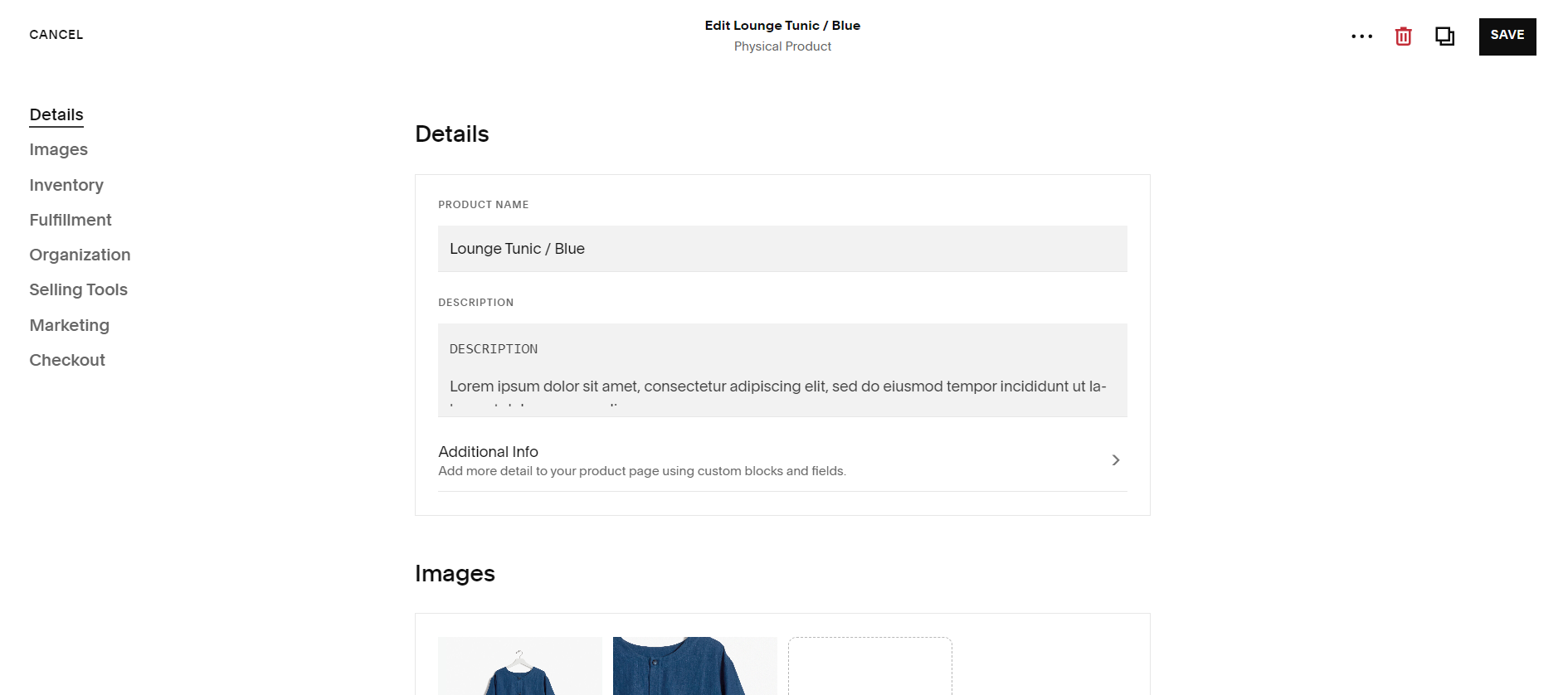
SubHub ecommerce features:
- Paypal and Stripe integration
- Physical and Digital product listings
- Pay-per view products
Ecommerce themes & templates
Squarespace provides a diverse selection of around 50 ecommerce templates, catering to various industries like fashion, beauty, home goods, and technology. These templates range from clean and minimalist to bold and colorful, accommodating different brand aesthetics and product types. Offering unique layout elements such as product sliders and featured collections, these templates enhance visual interest and engagement. On the other hand, SubHub does not have ecommerce specific templates.
Product page customization
Customizing Squarespace product pages offers options for layout, design, and interactive elements. Choose templates, customize colors, fonts, and content. Enhance engagement with features like customizable buttons, wishlists, comparisons, reviews, and related products. Advanced options include custom code injection and third-party app integrations. Limitations include fixed core page structure and the need for technical expertise. Free templates have fewer customization options than premium ones.
The SubHub website builder offers a range of product page customization options, allowing for the addition of physical items, digital downloads, and pay-per-view content. Features include the ability to manage product variants, upload images, and set visibility preferences. Users can also implement SEO strategies through meta tags and manage tax settings. Additional functionalities include member-specific discounts, image carousels, and individualized shipping costs.
Payment processing
When it comes to payment processing, Squarespace provides flexible payment processing for online stores with integrated gateways like Stripe and PayPal. External gateways can be set up for specific needs. Transaction fees may apply depending on the plan and payment method. Security measures include PCI compliance and fraud prevention. Additional features include payment links, support for subscriptions, and the ability to accept international payments in various currencies.
SubHub website builder supports two main payment gateways: Stripe and PayPal. These integrations allow for secure payment processing for subscriptions and store items using debit or credit cards. The platform itself does not charge commissions on transactions.
Website Editors
Website EditorsEvaluates the platforms’ website building and editing capabilities.Score Components:
- Customization tools (40%): Range and power of editing features.
- Editor usability (30%): User experience within the editor.
- Design flexibility (20%): Freedom in layout and design changes.
- Update and maintenance ease (10%): Simplicity of updating and maintaining the site.
 8.3
8.3
 6.9
6.9
🏆
Winner: Squarespace
. Squarespace, with a score of 8.3, offers a user-friendly editor that allows easy drag-and-drop website creation without coding. With visually appealing templates and customization options, it caters to beginners and pros alike. The real-time editing experience ensures instant previews. Prioritizing content, it’s mobile-responsive and offers functional features like forms, social media integration, and online stores. Squarespace seamlessly integrates with tools for extended capabilities.
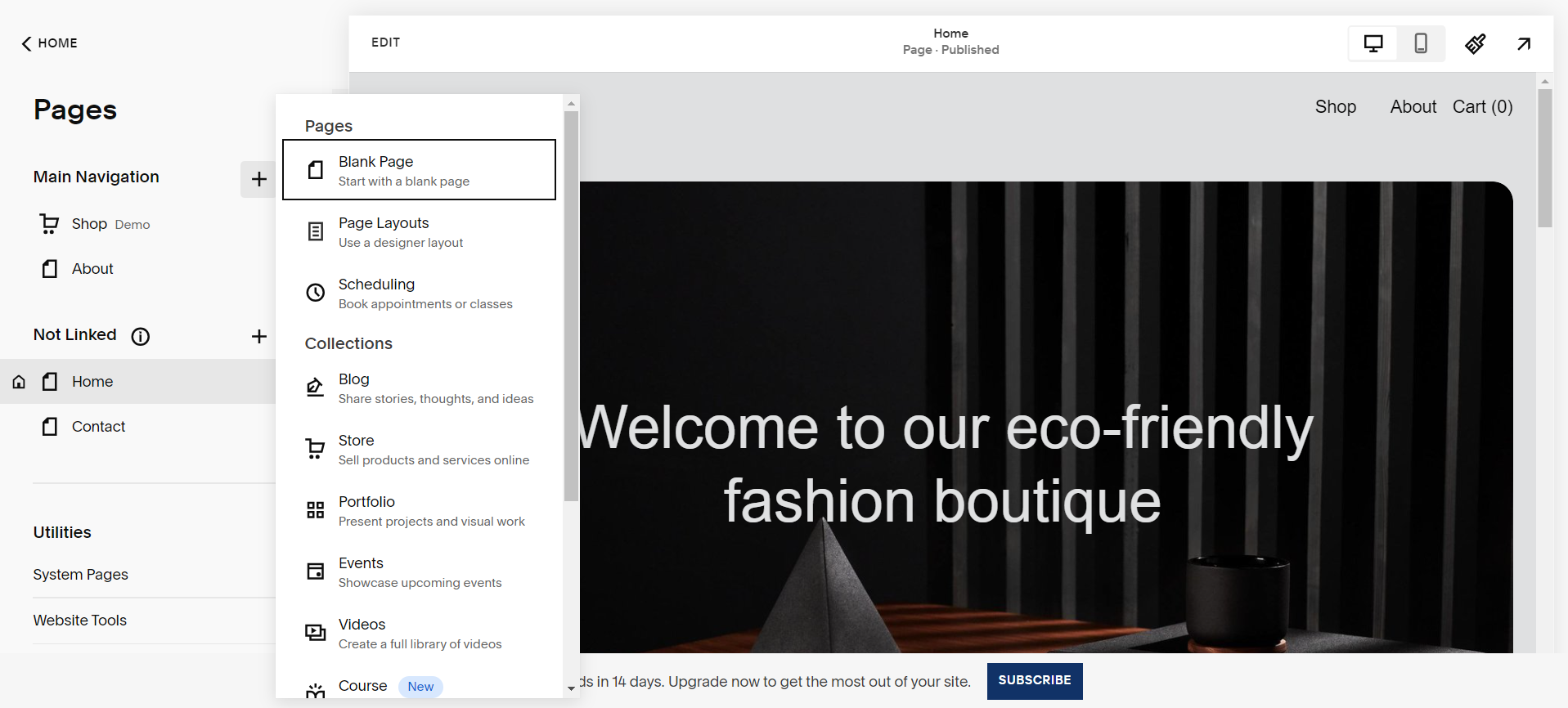
SubHub’s editor, scoring 6.9, is tailored for creating and managing membership sites, catering to content creators and entrepreneurs aiming to monetize their offerings. Its features encompass customizable templates, diverse content publishing options, and flexible subscription plans with seamless integration for recurring revenue through payment processors. Additionally, SubHub supports online course creation, provides marketing tools like landing page builders, and offers detailed analytics for monitoring website metrics.
Mobile editor/app
 8.5
8.5
 4.0
4.0

🏆
Winner: Squarespace
. Both Squarespace and SubHub offer mobile capabilities, but they cater to different needs and skill levels. Squarespace provides a mobile app that allows users to manage their website, edit content, view analytics, manage their online store, and schedule social media posts. However, it does not offer the full range of functionalities available on the desktop version.
On the other hand, SubHub does not have a dedicated mobile editor app. Users can manage some content on their website using the mobile browser version, but it’s not possible to change the layout and design of the website on mobile. Given this, Squarespace is the clear winner in this category due to its more comprehensive mobile editing capabilities.
In summary, Squarespace receives a higher rating due to its more comprehensive mobile editing capabilities, while SubHub is limited in this aspect and may be better suited for users who primarily manage their website on a desktop.
Product testing options
Product Testing OptionsAssesses the options for trying out platform features before commitment.Score Components:
- Trial quality (40%): Extent and usefulness of the trial or free version.
- Feature accessibility (30%): How many features are available to test.
- Trial duration (20%): Length of the trial period.
- Ease of transition (10%): Smoothness of moving from trial to paid plans.
 7.4
7.4
 7.0
7.0
Overall Result
:
Squarespace wins
. Squarespace scores 7.4, slightly higher than SubHub’s 7.0. Both platforms offer a 14-day free trial, but Squarespace provides access to most of its premium features, except for custom code, premium integrations, and removal of Squarespace branding. SubHub allows testing of premium features during the trial. Squarespace also offers a full refund within 14 days of the first payment, while SubHub provides a 7-day money-back guarantee.

|

|
|
|---|---|---|
|
Free Plan |
No | No |
|
Trial Duration |
14 days | 14 days |
|
Testing Premium Features |
Most, except for custom code, premium integrations and removal of Squarespace branding |
During the free trial |
|
Money Back Guarantee |
Full refund within 14 days |
7-day money back guarantee |
Price
PriceLooks at the cost-effectiveness and value for money of each platform.Score Components:
- Plan value (40%): What each pricing tier offers.
- Transparency and clarity (30%): Clearness of pricing structures.
- Flexibility of plans (20%): Range of options to suit different budgets.
- Hidden costs (10%): Additional expenses not included in the plan.
 8.4
8.4
 6.8
6.8
Squarespace offers a more affordable range of plans compared to SubHub, and it also provides a higher discount on annual billing.

|

|
|
|---|---|---|
|
$10-$15 |
Personal ($12/month): Build a basic website with limited features for personal use. Access to basic templates, mobile-friendly design, and some social media integrations. Value for price: 6.0 |
No offering at this amount. |
|
$15-$20 |
Business ($16/month): Upgrade features with custom domain, SEO tools, marketing tools like email campaigns, and analytics. Value for price: 7.5 |
No offering at this amount. |
|
$20-$30 |
Commerce ($26/month): Perfect for online stores with built-in eCommerce functionality (unlimited products), secure checkout, inventory management, and marketing tools. Value for price: 8.5 |
No offering at this amount. |
|
$40-$50 |
Advanced Commerce ($40/month): Cater to high-volume stores with advanced eCommerce features like abandoned cart recovery, product subscriptions, gift cards, and real-time shipping quotes. Value for price: 9.0 |
Starter ($47/month): Up to 500 members, 5 GB storage, secure payment processing, course builder, 5 landing pages, e-commerce. Value for price: 6.5 |
|
$90-$100 |
No offering at this amount. |
Pro ($97/month): Up to 2000 members, 50 GB storage, removes SubHub branding, 15 landing pages, along with Starter features. Value for price: 7.5 |
|
$100+ |
No offering at this amount. |
Premium ($147/month): Unlimited members, 200 GB storage, email white labelling, 30 landing pages, plus all Pro features. Value for Price: 8.5 |
location. As a result in rare cases the prices displayed here can differ from the ones you see on their
websites.
Hosting quality
Hosting
qualityExamines the reliability and performance of the hosting solutions.Score Components:
- Uptime (40%): Consistency and reliability of website availability.
- Speed (30%): Loading times and performance.
- Bandwidth and storage (20%): Sufficiency of resources provided.
- Data centers (10%): Quality and distribution of hosting infrastructure.
 7.6
7.6
 5.5
5.5
Winner: Squarespace
. Squarespace offers proprietary cloud-based hosting with a 99.9% uptime guarantee and data centers across North America, Europe, and Asia. SubHub, on the other hand, offers managed cloud hosting but does not provide uptime statistics or guarantees, and does not disclose the locations of its data centers. This gives Squarespace a clear edge in terms of hosting quality.

|

|
|
|---|---|---|
|
Do they offer hosting? |
Yes, included in all plans |
Yes, with storage limitations depending on the plan and daily backups |
|
Data Centers: |
Across North America, Europe, and Asia |
Not disclosed |
|
Type of hosting: |
Proprietary cloud-based hosting |
Managed Cloud Hosting |
|
Uptime: |
99.9% |
Not provided |
|
Uptime Guarantee: |
Yes |
No |
Website Speed Optimization
Website Speed OptimizationEvaluates optimization of website loading timesScore Components:
- PageSpeed Score (30%): Google’s score indicating performance optimization.
- Loading Time (30%): The average time until a website is fully interactive.
- Mobile Optimization (15%): Optimization effectiveness for mobile devices.
- Resource Optimization (15%): Optimizing images, scripts, and other heavy resources.
- CDN Usage (10%): Use of CDN to enhance speed across geolocations.
 6.7
6.7
 5.6
5.6
🏆 Winner: Squarespace
Both Squarespace and SubHub have strategies in place for website speed optimization, but Squarespace comes out ahead with a more comprehensive approach and better transparency about their performance.

|

|
|
|---|---|---|
|
Focus |
Responsive design, image optimization |
Image Optimization, Caching |
|
Performance Tools |
CDN, code minification, lazy loading |
Mobile Optimized design |
|
Key Strategies |
Responsive design, image optimization, CDN, code minification, lazy loading |
Image Optimization, Caching, Mobile Optimized design |
|
Load Times |
0.7s to 9.1 s (Average: 2.9s) |
Varies depending on optimization and website complexity |
|
Page Speed Scores Range |
20/100 to 93/100 (Average: 62.7/100) |
Not provided |
|
Core Web Vitals Improvement |
Emphasis on LCP, FID, CLS improvements |
Not provided |
Squarespace’s approach to website speed optimization includes responsive design, image optimization, use of a content delivery network (CDN), code minification, and lazy loading of images. This comprehensive strategy has resulted in load times ranging from 0.7s to 9.1s, with an average of 2.9s. PageSpeed scores for Squarespace sites range from 20/100 to 93/100, with an average of 62.7/100. Squarespace also emphasizes improvements in Core Web Vitals, specifically LCP, FID, and CLS.
On the other hand, SubHub’s strategy for website speed optimization includes image optimization, caching, and mobile-optimized design. However, they do not provide specific information about their load times, PageSpeed scores, or Core Web Vitals improvements. This lack of transparency makes it difficult to accurately assess their performance in these areas.
Get a head start on website creation with AI
Create a custom website tailored to your business needs 10X faster with 10Web AI Website Builder!
Plugins and integrations
Plugins and integrationsMeasures the range and effectiveness of additional plugins and integrations.Score Components:
- Variety of options (40%): Range of available add-ons.
- Integration smoothness (30%): Ease of integrating plugins into the site.
- Quality of plugins (20%): Functionality and reliability of the options.
- Custom integration capabilities (10%): Support for custom or third-party integrations.
 6.8
6.8
 5.7
5.7
🏆 Winner: Squarespace.
With a score of 6.8, Squarespace offers more integrations and extensions than SubHub, which scores 5.7. Squarespace’s integrations cover a wide range of functionalities, including ecommerce, analytics, marketing, and social media. On the other hand, SubHub focuses on simplicity and integrated functionalities for building membership-based websites, with limited third-party integrations. While SubHub provides a comprehensive toolkit for creating and managing membership sites, Squarespace’s diverse range of integrations gives it the edge in this comparison.
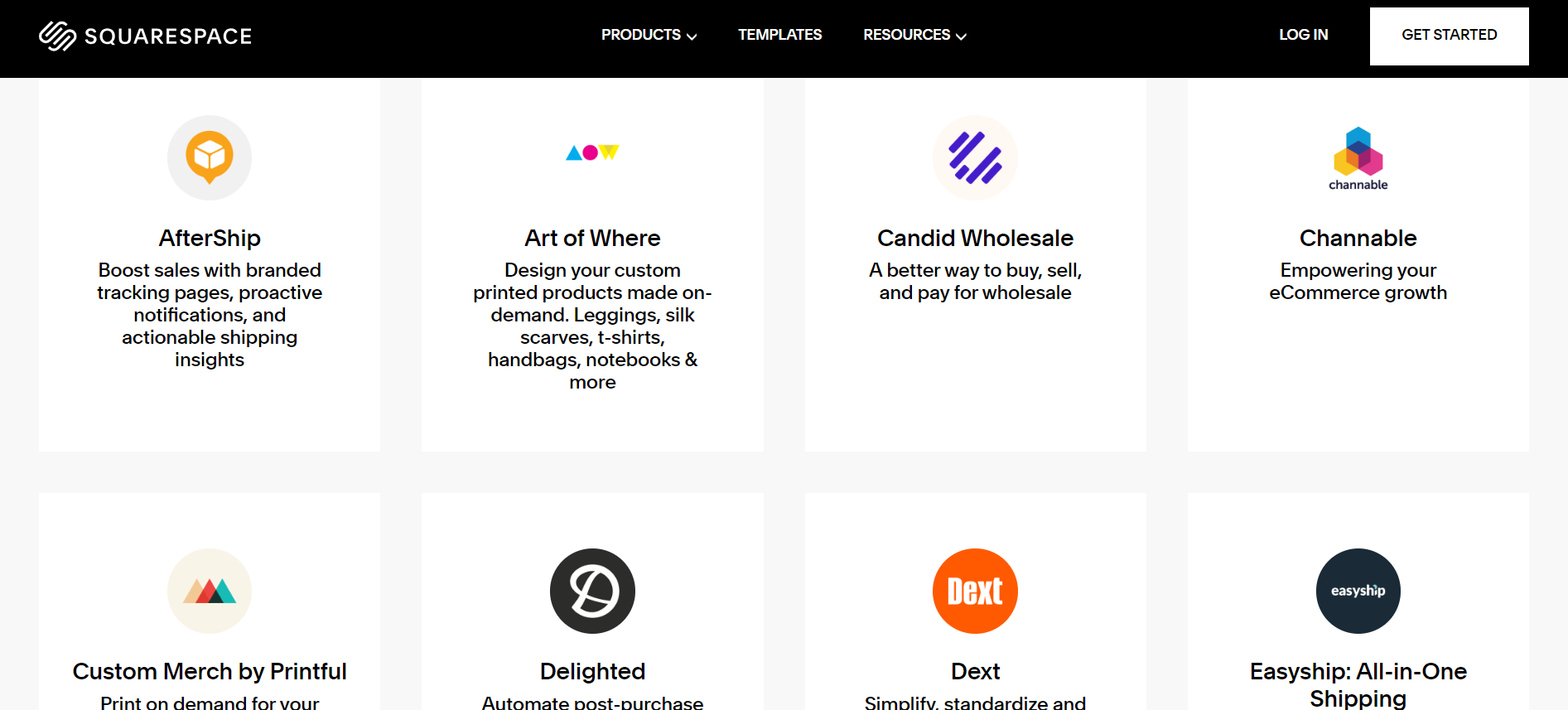
Marketing Features
Design FunctionalitiesRepresents how well each platform allows for creative design and customization of websites.Score Components:
- Template Variety (30%): Range and quality of design templates.
- Customization (30%): Flexibility and options for design alterations.
- User Interface (20%): Ease and intuitiveness of the design process.
- Responsiveness (10%): Adaptability to different devices and screen sizes.
- Innovation (10%): Unique design features and tools.
 8.1
8.1
 5.7
5.7
🏆
Overall Winner: Squarespace
. Squarespace stands out for its comprehensive marketing tools, especially in social media integration and analytics. SubHub, while strong in SEO and email marketing, lacks social media integration.

|

|
|
|---|---|---|
|
SEO Tools |
|
|
|
Email Marketing |
|
|
|
Blogging |
|
|
|
Social Media Integration |
Direct linking and selling on social platforms, plus feed displays on-site |
No social media integration |
|
Analytics and Reporting |
Detailed insights into website performance and visitor behavior |
Basic analytics for website traffic and engagement |
|
Ads and Promotions |
Integration with Google Ads and tools for managing sophisticated ad campaigns |
Basic ad and promotion tools |
Customer Support
Customer supportEvaluates the quality and availability of support options.Score Components:
- Response time (40%): Speed of support responses.
- Support quality (30%): Effectiveness and helpfulness of the support.
- Availability (20%): Range of support channels (phone, chat, email).
- Resource richness (10%): Quality of self-help and educational materials.
 7.8
7.8
 6.3
6.3
🏆 Winner: Squarespace
. In the comparison of Squarespace vs SubHub, Squarespace takes the lead with a customer support score of 7.8. Squarespace offers a variety of support options, including live chat, email, a community forum, and a comprehensive help center. Live chat and phone support are available on weekdays from 6 AM to 6 PM PST, while email support is accessible 24/7. The community forum and help center provide round-the-clock access, ensuring users can find help whenever needed.
SubHub, with a customer support score of 6.3, provides support primarily through email and a support portal for detailed queries. While it also offers an FAQ section for immediate answers, it lacks the extensive support channels and availability that Squarespace provides. SubHub does not offer dedicated enterprise support, which further limits its appeal for larger businesses seeking comprehensive assistance.
Security
SecurityLooks at the platforms’ security measures and data protection.Score Components:
- Data protection (40%): Safeguards for user and customer data.
- SSL and encryption (30%): Implementation of secure connections.
- Compliance (20%): Adherence to industry security standards.
- Regular updates (10%): Frequency of security updates and patches.
 8.8
8.8
 4.0
4.0
🏆
Winner: Squarespace
. Squarespace takes a comprehensive approach to security, with measures including secure hosting, SSL certificates, vulnerability scanning, malware and spam filters, two-factor authentication, data encryption, and compliance with security regulations. This ensures that both your website content and customer information are well-protected.
SubHub, on the other hand, does not provide any information about the security measures it employs to protect websites built on its platform. This lack of transparency is a significant drawback, especially for a platform designed to handle membership sites, which often deal with sensitive user data.
AI Capabilities
AI capabilitiesMeasures the effectiveness of AI-driven features and tools.Score Components:
- Automation efficiency (40%): Impact of AI on streamlining processes.
- Personalization (30%): AI-driven customization for users or customers.
- AI-Assisted design (20%): Role of AI in website design and functionality.
- Data analysis (10%): Use of AI in interpreting user data and analytics.
 7.5
7.5
 0
0

|

|
|
|---|---|---|
|
AI Builder |
Not fully automated, but offers AI-powered features |
|
|
AI Ecommerce features |
AI-powered copywriting, SEO optimization, product suggestions |
|
|
AI content generation |
Generates diverse content including product descriptions, website copy, blog posts, social media captions, and email marketing content |
|
|
Additional AI features |
SEO optimization, related product recommendations, email marketing insights, inventory management insights, social media content and ad suggestions, content simplification and expansion, product title suggestions |
|
🏆 Winner: Squarespace
. Squarespace, with a score of 7.5, offers a range of AI-powered features that assist in website creation, eCommerce, content generation, and other areas. These tools contribute to a more efficient and effective platform.

SubHub, on the other hand, does not have any AI capabilities. This lack of AI features may limit the platform’s efficiency and effectiveness, especially in areas such as eCommerce and content generation.
User Management
User ManagementAssesses the platforms’ capabilities in managing user roles, permissions, and accessibility.Score Components:
- Role Customization (40%): Flexibility in creating and defining user roles and
permissions. - Ease of Management (30%): User interface and tools for managing users.
- Access Control (20%): Effectiveness of access control measures for different user
levels. - Scalability (10%): Ability to manage a growing number of users efficiently.
 7.4
7.4
 5.2
5.2
🏆 Winner: Squarespace
. Squarespace and SubHub offer different approaches to user management.
- Squarespace’s user management varies by plan. The Personal Plan allows one owner, Business and Commerce Plans permit 2 collaborators with different access levels, and the Enterprise Plan offers unlimited users, each with customizable access privileges, from full administrators to restricted contributors.
- SubHub allows multiple user accounts, however the platform does not specify how many accounts are supported.
Squarespace User Roles and Access Levels:
| Role | Description | Access Highlights |
|---|---|---|
| Owner | The primary user who created the website and has full access. | Full site access, including billing, site settings, content editing, and member management. |
| Administrator | Users granted nearly full access to manage the site alongside the Owner. | Access to most areas except for some owner-specific settings like ownership transfer. |
| Content Editor | Users focused on adding and managing site content without full site access. | Can add, edit, and delete content on pages, blog posts, and manage comments. |
| Billing | Users who manage the subscription and billing details. | Access to billing information and the ability to update subscription details. |
| Store Manager | Users who manage the ecommerce aspects of the site. | Can manage inventory, fulfill orders, manage customers, and view sales analytics. |
| Custom | A role defined by the site owner or administrators with specific access. | Customizable access as defined by the Owner or Administrators, can vary widely between sites. |
SubHub User Roles and Access Levels:
| Role | Description | Access Highlights |
|---|---|---|
| Administrator | Full access to the platform except for Homepage and Course Editor. | Can manage all aspects of the platform, including content, store, and member management. |
| Content Management | Focuses on managing and organizing content within the platform. | Can access and manage content-related features but does not have access to Homepage or Course Editor. |
| Store (access only) | Specializes in handling the platform’s store features. | Limited to store management functions; no access to Homepage, Course Editor, or member management. |
| Member Manager (access only) | Oversees member accounts, roles, and subscriptions. | Can manage members and their subscriptions but cannot access Homepage, Course Editor, or store management. |
| Origin Admin Email | The initial administrator with the highest level of access, including Homepage and Course Editor. | Exclusive access to Homepage and Course Editor, on top of what the Administrator role provides. |
Additional Features

|

|
|
|---|---|---|
|
SSL Certificate |
|
|
|
Custom Domain |
|
|
|
Free Custom Domain Included |
|
|
|
International Domains |
|
|
|
Mobile Responsive |
|
|
|
Page Speed |
|
|
|
Website Builder Mobile App |
|
|
|
Convert a Website To An App |
|
|
|
Website Analytics |
|
|
|
Multilingual Sites |
|
|
|
Multiple Users |
|
|
User Feedback
Squarespace is well-liked for its easy-to-use interface and versatile tools, making it ideal for those who aren’t tech-savvy. It offers various features like website creation, SEO, online selling, and more, catering to different users. Customers appreciate its good customer support and visually appealing templates, creating a professional online presence. However, some users find issues with domain transfer/setup, limited customization options, and consider the pricing slightly higher. There are also occasional concerns about customer service and technical limitations like template rigidity and missing features.
User feedback on SubHub presents a mix of positive and negative experiences, emphasizing the platform’s feature-rich environment and customizable templates. Users appreciate the flexibility and the quality of customer service, highlighting the platform’s continual updates and support as key benefits. However, some users express dissatisfaction with aspects such as the platform’s interface, lack of community features, and service fees for ticket resale. Concerns were also raised about the custom design service and mobile-friendly solutions taking longer than expected.
The making of this blog
We followed a clear, step-by-step process to write and research this article.
FAQ
Which platform is better for creating a membership site, Squarespace or SubHub?
Can I use Squarespace for ecommerce?
Is SubHub good for selling products online?
Which platform offers better customer support, Squarespace or SubHub?
How do Squarespace and SubHub compare in terms of design flexibility and templates?
Are there any significant differences in pricing between Squarespace and SubHub?
Which platform is easier to use for beginners?











